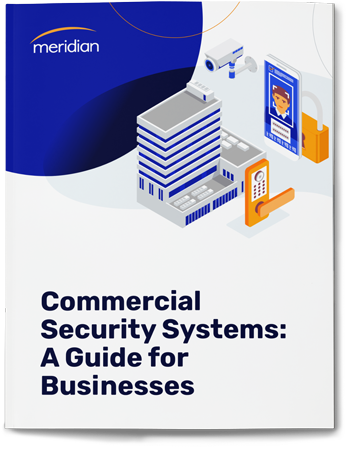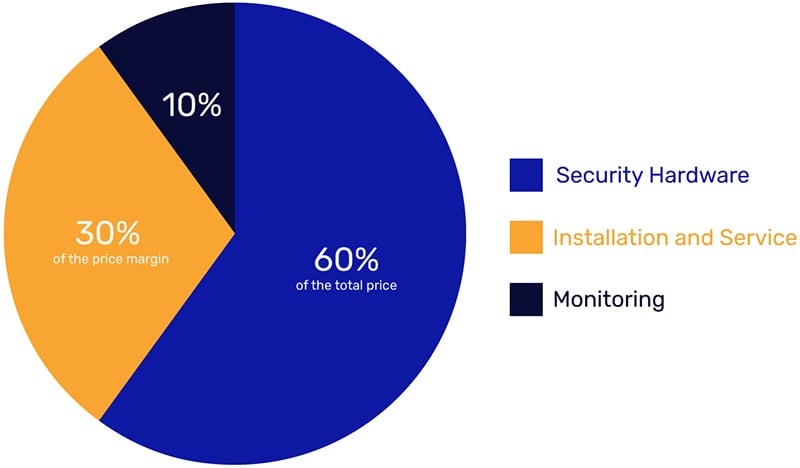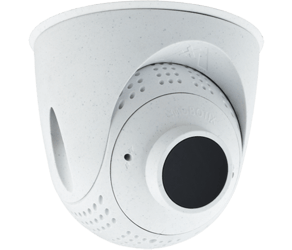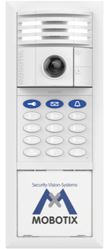Now that you’ve decided to invest, it’s time to uncover the gaps in your security posture and assess your exact needs. Take the time to understand your needs, as this will simplify and shorten the buying process later — ensuring you choose the best commercial security system with features that support your operational needs.
Here are the factors to consider as you evaluate your security needs:
Physical Security Vulnerabilities
While all businesses are exposed to crime, the chance varies depending on your industry and location. For example, a financial institution in a high-crime area requires more robust security measures than a retail store in a peaceful suburban town. Understand the inherent risk associated with your business and adjust your security measures accordingly.
In addition to identifying risk, it's essential to review your physical security. List out all the potential risks in your building —considering public entry points and how assets are being protected. Look for flaws in your on-site security, including:
- Camera blind spots
- Secure areas that are easily accessible
- A shortage of security personnel.
Amount of Cameras
You’ll need to evaluate which areas of your building need video surveillance to determine how many cameras your business needs. Think about the locations you need to cover to keep your people, property, and assets safe.
Here are some important areas to consider:
- Lobbies
- Parking lots
- Property entrances/exits
- Areas where employees work
- Areas where customers are present
- Areas where valuable assets are kept
Video Quality
When choosing a business security system, consider the resolution and frame rate. Resolution determines how clear or realistic captured footage appears. For high-resolution images, you want a system capable of capturing a resolution of 1080p or 4K.
The frame rate also impacts image quality as it determines the smoothness of the video. A low frame rate will result in choppy footage, while higher frame rates will capture fast-moving objects and people, such as license plates,with more clarity. For smooth image quality, you want a system that supports at least 30 frames per second.
Keep in mind that high-quality video footage will help you identify people and objects more accurately, improving the chances of collecting concrete evidence if a crime occurs.
Video Surveillance Storage
How much video storage you need primarily depends on the following:
- The resolution of your footage
- How many cameras are recording
- The size and type of recording files
- How long do you want to store it
There are three main storage options: local, hybrid, and cloud. Storing recorded footage and data in the cloud has many benefits, including remote access, device flexibility, and greater storage capacity. On-premise storage runs the risk of hardware failure, theft, or tampering, whereas cloud storage includes robust cybersecurity and data protection measures.
Scalability
Video surveillance integration with access control and visitor management is growing in popularity as it gives businesses greater visibility and more control. Look for a commercial security system that's designed with scalability, integration, and flexibility as a top feature. Your security requirements are ever-changing, so it's integral to choose a flexible system that can accommodate future growth.
For example, MOBOTIX video surveillance cameras easily integrate into existing systems so organizations can scale quickly and efficiently. The revolutionary decentralized design provides organizations with maximum flexibility and add-on capabilities so they can continue to optimize their security infrastructure as new needs arise. MOBOTIX can combine with other ONVIF-compatible security equipment, providing a flexible option for scaling video surveillance security systems.
Evaluating Security Needs: Questions to Consider
The following questions will guide purchasing decisions and help you define your security needs in more granular detail.
- How many cameras do you need?
- Where will the cameras be located?
- Do you need to be able to record in the dark?
- Do you need to be able to identify people’s faces?
- What is the approximate square footage of your facility?
- Do you have server rooms that need added protection?
- Do you have mission-critical equipment on the property?
- Do you have glass windows and doors that can be broken into?
- How many entrances and exits are located throughout the facility?
- Do you need continuous footage or a video record of only specific events?
- What procedures are in place to prevent unauthorized access after business hours?
- How long does video footage need to be stored, and does it need to be high-quality?
Your answers will streamline future conversations with service providers as they will have all the information they need to determine equipment type and placement.









